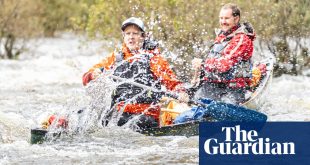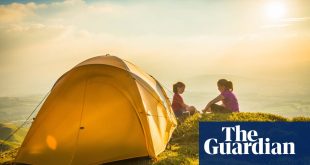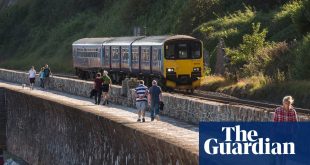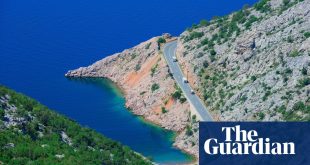To the outside world we must have been a very odd sight. A group of 20 people standing on the sloping granite boulder-strewn hillside of Ermo das Águias in Portugal’s Côa valley, taking photographs and whispering in awe at the sight of what appeared to be an enclosure of brown cows.

But these were no ordinary cows. These were tauros; a new, specially bred version of a long-extinct wild cattle species (called aurochs) that were last seen here 400 years ago. Their reintroduction is the latest initiative of Rewilding Portugal – a four-year-old non-profit organisation whose mission is to create a wildlife corridor along the length of the Côa River valley, joining the key habitats of the Douro River in the north with the Malcata mountains in the south.
Once an agricultural stronghold for hardier farmers (due to the steep, scrub-covered ground), depopulation has seen the valley abandoned for more fertile areas. Young people have left for the cities, family farmsteads have been abandoned and become overgrown. But one man – Pedro Prata, team leader of Rewilding Portugal – has a plan. Tourism through rewilding.
“Right now people mainly stop in the Côa valley for a single night when driving to the Algarve – they think there is nothing to see,” says Pedro. “By acquiring and rewilding the farmland, and reintroducing large herbivores like the tauros to create a mosaic landscape, we can help biodiversity, prevent wildfires [overgrown scrub caused by lack of grazing is highly flammable] and give people reason to stay longer.”
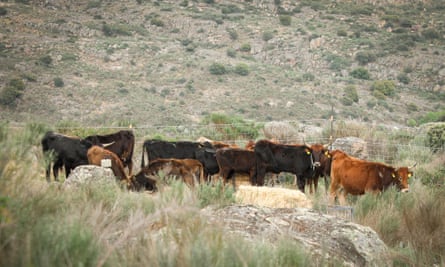
My visit had begun a couple of days earlier, after an overnight ride on the new, greener (using less CO2-emitting LNG fuel) Brittany Ferries Santoñaship to Santander in Spain. From there, I head to the town of Vila Nova de Foz Côa, near the Douro River, 130 miles east of Porto. At the Côa Museum I meet my guide João Pedro for an introduction to the 5,000 pieces of Palaeolithic rock art found in the valley below.
“They almost weren’t preserved,” he says as he points to the remains of a dam whose planned construction in the early 1990s was halted when archaeologists found the first of the carvings. One of the etchings was a cluster of auroch. “Think about the significance of that,” he says. “For 30,000 years people drew pictures of them. That creature was not just important, it was key to their survival.”
His passion for these extinct (due to hunting and the domestication of cattle) megafauna is matched by that of Rewilding Portugal’s Pedro, who I meet the following day after overnighting in the organisation’s new Rewilding Centre in the sleepy village of Vale de Madeira. It’s a hub for visitors to learn about the rewilding projects and go on trips in the area.

After a comfortable night in the six-bedroom, self-catered lodge, I join Pedro to see the release of the tauros. They’ve come from a breeding programme in the Netherlands and will stay in the large penned enclosure before being released into the wider area. It’s a big moment for the team, and their excitement is palpable. But they are not the only herbivores there. Sorraia horses have been on the land for about a year. Smaller than the average horse, with predominantly brown and yellow coats and sometimes a zebra-like mule stripe on their legs, they are indigenous to Portugal, though it’s thought there are only about 200 left.
“We now have these two species of large grazers shaping the landscape,” Pedro says proudly. “It will affect the distribution of floral landscape, provide prey to predators and leave remains for scavengers too. By bringing back these missing pieces to our ecosystem we are also providing wildlife watching opportunitie.”
I spend the rest of the day wandering the trails with him, passing waterfalls, climbing up rocky escarpments, watching vultures soar, the horses gallop and the tauros become more accustomed to their new home. For a wildlife enthusiast it’s like getting a front-row seat to the creation of a new Garden of Eden. The next morning I journey farther south along the Côa valley to the cobblestone streets of the medieval village of Vilar Maior which sits adjacent to the first rewilding area Pedro’s team bought in 2021. (There are three sites in the region, but the hope is for six or seven across the valley.)
A former agricultural site, its crumbling drystone walls are bordered with oak, ash and alder trees. I spy roe deer and red flashes of bee eater birds just arrived from Africa. “Control areas” have been fenced off from the horses, so even a layperson like me can see the diversity in the plantlife where the herbivores are allowed to roam.
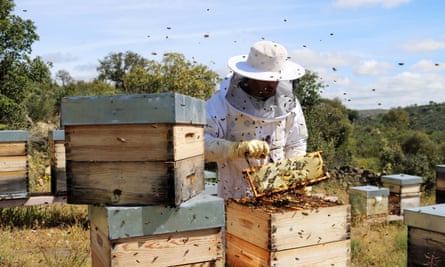
also sells wine and olive oil
Later I meet with Fernando Romão, owner and guide for Wildlife Portugal, which offers bird-watching and photography excursions to the rewilding areas. He takes me to the third newly purchased site in the valley, Paul de Toirões. Extensively mined until abandoned a decade ago, a network of wetlands in the form of lagoons, canals and temporary ponds has now formed, which attract hundreds of bird species.
after newsletter promotion
As we walk we see black stork, nesting grey heron, female marsh harriers and black kite, as well as signs of resident otter. Camera traps are positioned on the young oak trees and have, Fernando tells me, captured images of deer and even wolves. “Bird hides will soon be installed, walking routes plotted and all the barbed wire will be removed,” he says.
As well as sites like these three, providing stepping stones across the valley for wildlife, part of Rewilding Portugal’s work is to engage with fellow landowners and stakeholders as equals to enact change.
Working with tour providers such as Fernando is a huge part of it, and now nearly 40 companies like his form the Wild Côa Network, each promoting rewilding while providing services to tourists – from activities (hiking, biking, farm visits, wine tasting) to restaurants and accommodation. Each one is independent, committed to sustainable practices and encourages immersion into nature and local life, boosting an appreciation of nature while financially supporting local people.
My last night is spent at one such network partner – the eco-certified Cró Rural Hotel. It sits adjacent to an 18th-century thermal spa, a place that had sat in ruins for over 50 years until it was rebuilt a couple of years ago. Now it provides employment to the nearby villagers, serves produce from local farms in its restaurant and brings tourists to a neglected area, while encouraging people to stay longer and explore the nearby rewilding project using waymarked walks right from the doorstep.
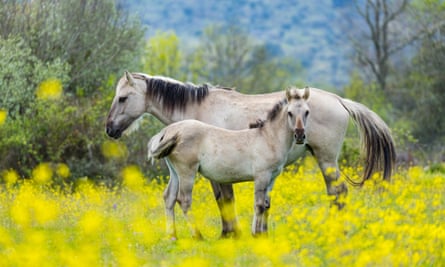
In the morning I visit the latest Wild Côa member, a beekeeping olive farmer, Joaquim Morgado. Rather than investing in property in Lisbon, as many advised him to, he decided he wanted to create self-catering accommodation at his grandfather’s old farm that would bring opportunity (and his grown-up son) back to the area. The result is four raised bungalows – based on the shape of the hexagonal beeswax cells– called Côa Honeycomb, which stand amid the sprawling olive groves; the old dovecote has been transformed into the central bar in a communal dining area where locally produced wine, honey and olive oil sit in the former pigeonholes; and an infinity pool overlooks an allotment where guests are encouraged to eat the vegetables and fruit.
“When I was a kid, all my friends would come here for the views and nature,” says Joaquim. “By creating this place I hope more people will now discover the beauty of the Côa valley.”
And that’s perhaps the key to the success of rewilding projects like these – not forgetting that people are as much part of the ecosystem as reintroduced herbivores and biodiverse landscapes. If you can get them to support the cause, then everyone – visitors and locals (both human and animal ) will thrive.
The trip was provided by Rewilding Europe Travel, which offers walking tours and photo expeditions in Portugal from £645pp for three nights. Brittany Ferries sails twice a week from Portsmouth to Santander (from where there is car hire for the drive to Portugal) from £170pp one way. For more on Rewilding Portugal and the Wild Côa Network, see rewilding-portugal.com
 Top Naija News: Nigerian News, Breaking News Nigeria and World News Top Naija News is a daily news publication in Nigeria, delivering the latest breaking news in Nigeria and around the world.
Top Naija News: Nigerian News, Breaking News Nigeria and World News Top Naija News is a daily news publication in Nigeria, delivering the latest breaking news in Nigeria and around the world.
